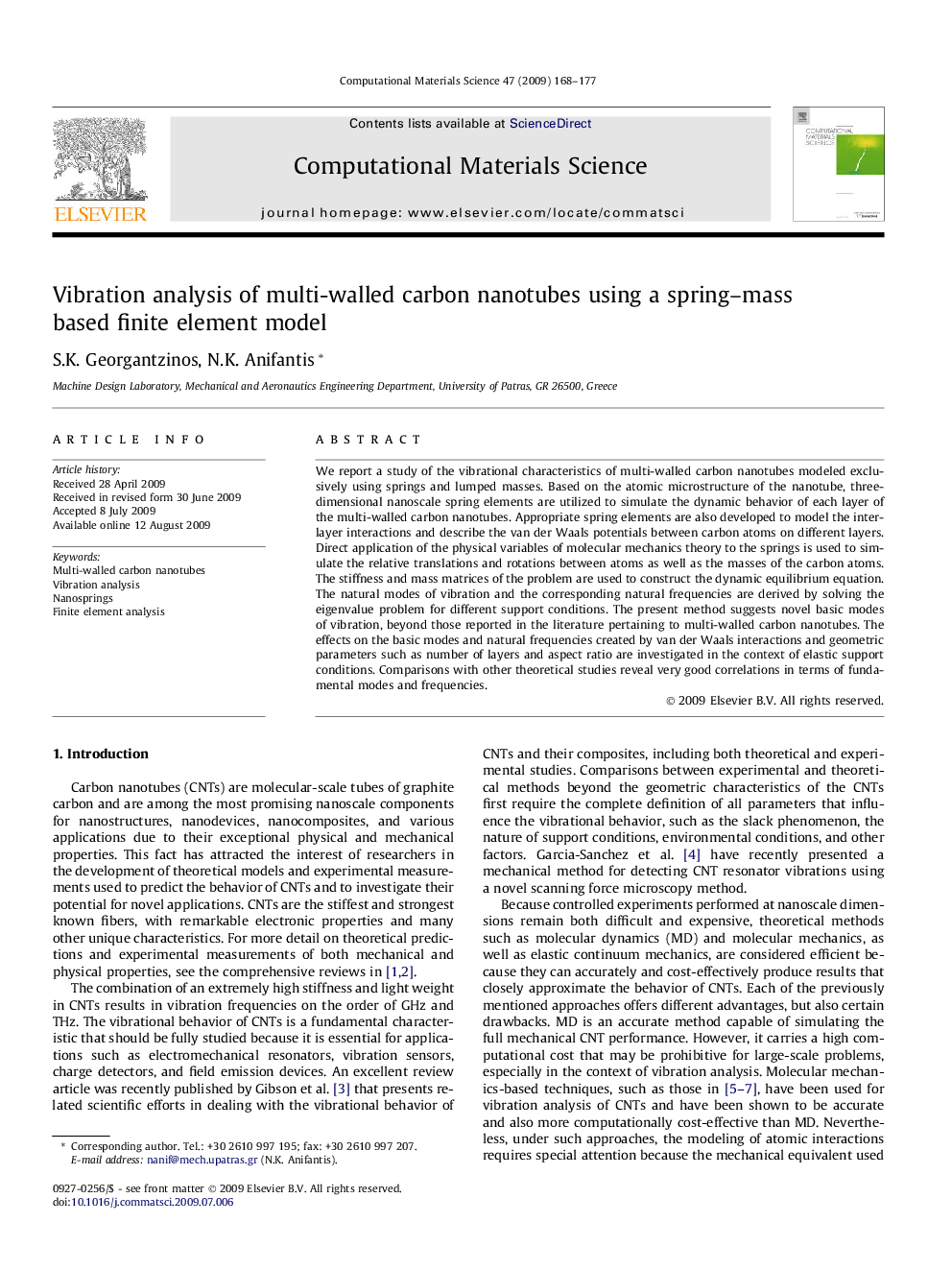| Article ID | Journal | Published Year | Pages | File Type |
|---|---|---|---|---|
| 1562904 | Computational Materials Science | 2009 | 10 Pages |
We report a study of the vibrational characteristics of multi-walled carbon nanotubes modeled exclusively using springs and lumped masses. Based on the atomic microstructure of the nanotube, three-dimensional nanoscale spring elements are utilized to simulate the dynamic behavior of each layer of the multi-walled carbon nanotubes. Appropriate spring elements are also developed to model the interlayer interactions and describe the van der Waals potentials between carbon atoms on different layers. Direct application of the physical variables of molecular mechanics theory to the springs is used to simulate the relative translations and rotations between atoms as well as the masses of the carbon atoms. The stiffness and mass matrices of the problem are used to construct the dynamic equilibrium equation. The natural modes of vibration and the corresponding natural frequencies are derived by solving the eigenvalue problem for different support conditions. The present method suggests novel basic modes of vibration, beyond those reported in the literature pertaining to multi-walled carbon nanotubes. The effects on the basic modes and natural frequencies created by van der Waals interactions and geometric parameters such as number of layers and aspect ratio are investigated in the context of elastic support conditions. Comparisons with other theoretical studies reveal very good correlations in terms of fundamental modes and frequencies.
